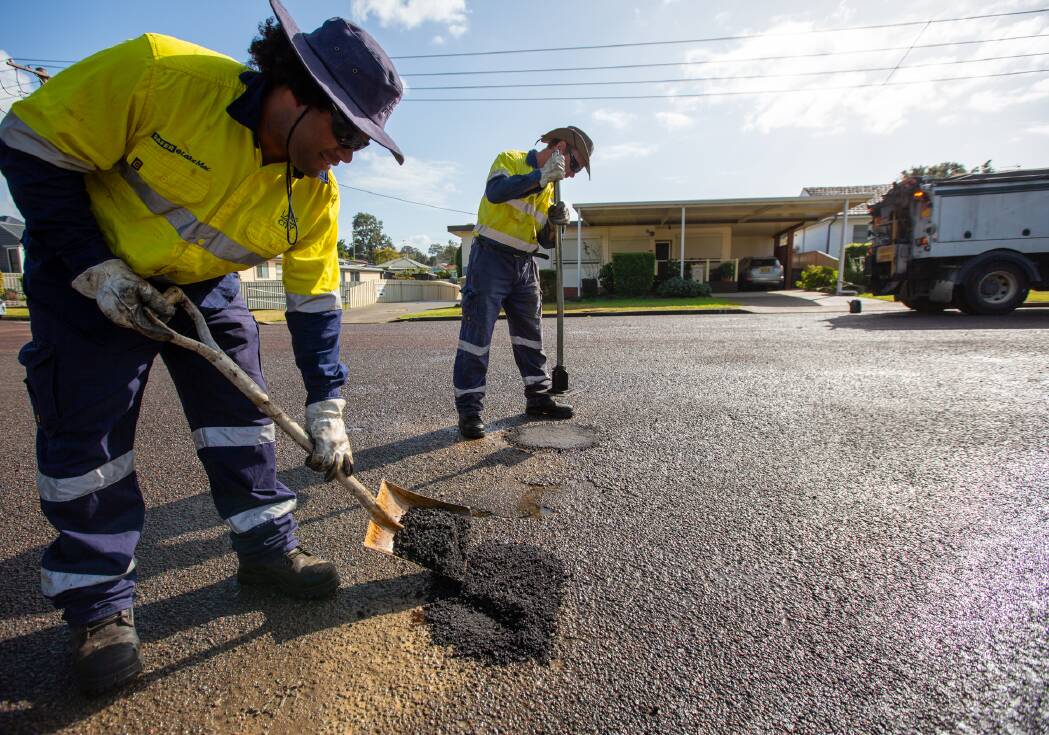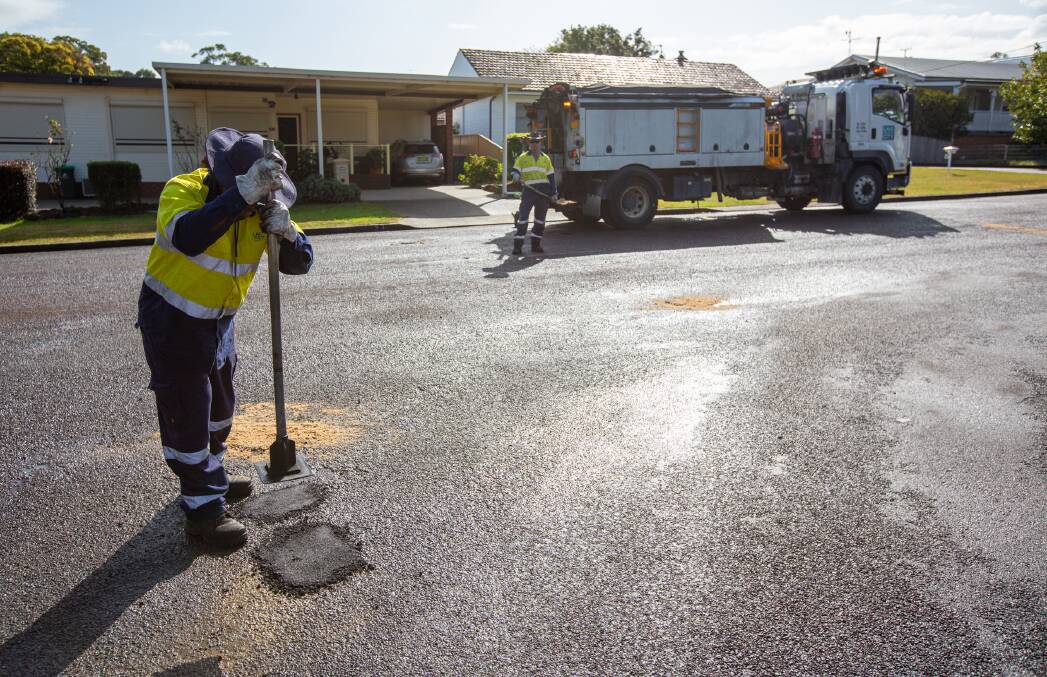
COUNCIL crews have had a hole lot of work cut out for them, filling more than four times the annual average of potholes across Lake Macquarie.
Over the past three years, Lake Macquarie council has spent almost $40 million on patching, pothole repairs and resurfacing after extreme weather events, heavy rain and flooding put enormous pressure on the city's roads.
Despite it all, council chief executive Morven Cameron said pothole works are "never, ever done".
"I mean the numbers are staggering, four times as many as normal and 500,000-square-metres of asphalt, it's just mind-boggling," she said.
"I'll say it's done and then there'll be a significant rain event and it won't be done because the whole nature of filling a pothole means every time we get abnormal heavy rain the patches can lift, that's just the science."
Ms Cameron said the council took an "unusual" approach this year, making the conscious decision to put more money towards potholes and tackle them quicker.
She said Lake Macquarie council is lucky enough to have the budget stability to be able to divert funds from other areas to get ahead of the problem.
"It's an interesting phenomenon, if we don't fix them now and you run a 10 to 20 year life on the cost to then maintain the road, the numbers are astronomical," she said.
"We had a very concerted program, we used local contractors as well as our own teams ... I'm very proud of the way we took a very proactive, flexible and quick response to something that would have been a 30 to 40 year legacy had we not done that."
Pothole repairs are prioritised across the city, based on traffic volumes and the risk they pose to road users.
The 500,000sqm of asphalt council crews laid is equivalent to an 83km continuous stretch of road, equating to 56,000 tonnes of asphalt, 22,000 tonnes of which was used for patching works alone.

In the average year, council crews fill about 3500 potholes, and city works acting manager Jason Wilks said community requests have hit a record low due to the extra effort.
"This has enabled our road maintenance crews to move from reactive repairs back to their routine runs," he said.
"There is now greater capacity to return to business as usual operations while planning and preparing for any extreme weather events and the damage they might cause."
This financial year, the council spent $17.6 million on patching, pothole repairs and resurfacing, up from $10.5 million in 2021-22.
It deploys two full-time crews to undertake the work, one covering the city's east, another the west.
The council employs contractors for some tasks, including 'heavy patching' - a more substantial solution than individual pothole repairs, but less time intensive or expensive than replacing a road.
It also undertook several high-priority road infrastructure projects to help drivers cruise across the city.
A bridge upgrade at Wilton Road, Awaba was completed and is now open to traffic, along with the $8.6 million dual-lane Weir Bridge at Barnsley.
The old weir crossing was single-lane and prone to flooding before it was permanently closed to traffic in early 2021 due to storm damage.
Construction works also began at the intersection of Alton Road, Central Road and Freemans Drive at Cooranbong, which were expected to be completed by the end of the year.
Crews also started work on the underpass lights at Fassifern Road and Greenway Park and completed planning for footpath improvements at Fassifern Road.
Residents can call 4921 0333 to report any road issues.







